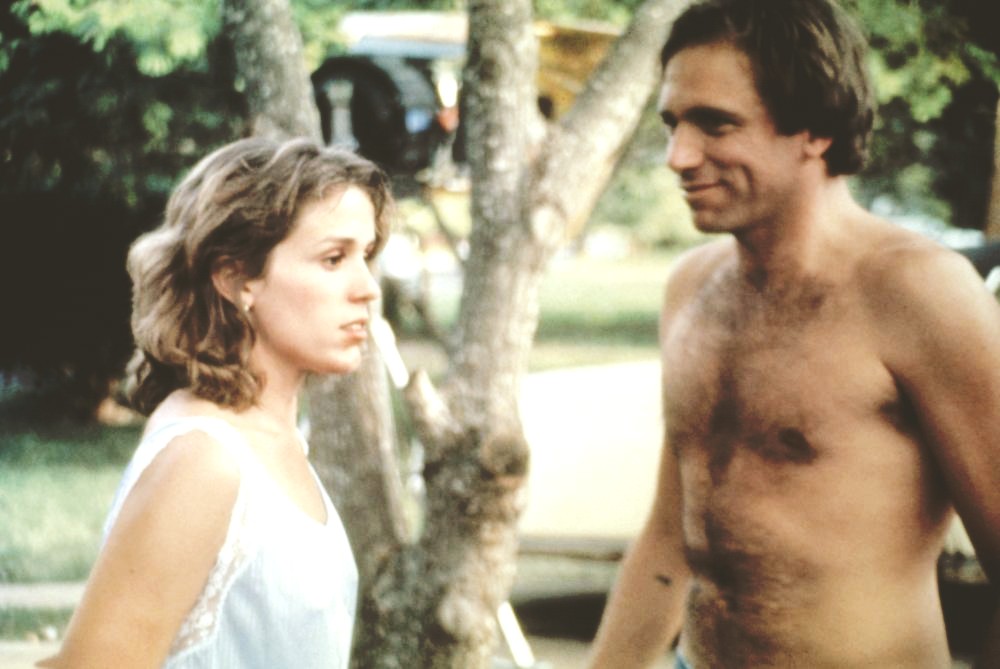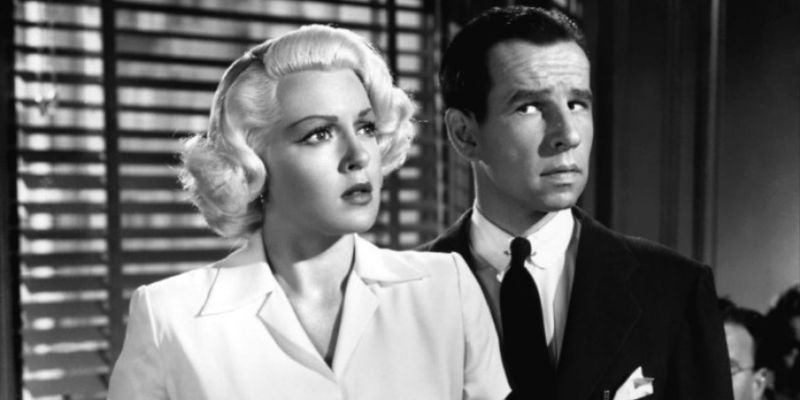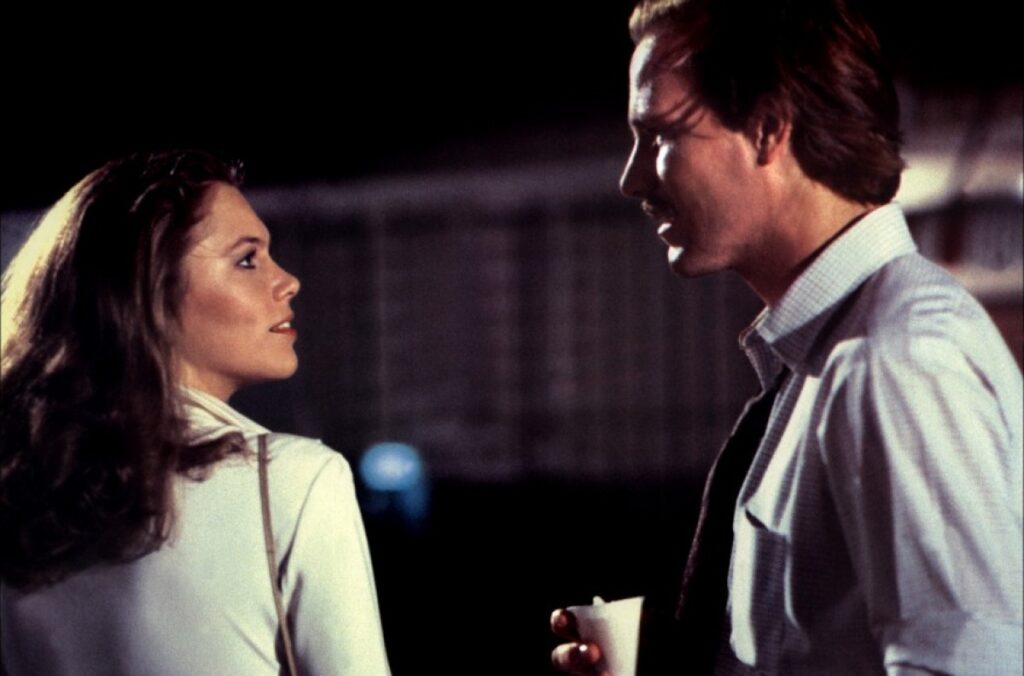I think we all can agree that the twin peaks—so to speak—of film noir came in the 1940s and 1980s.
What’s that? How can I ignore the 1950s, which gave us gritty crime classics like “The Phenix City Story” and others? How can I pass over the classic noir of the 1970s? “Chinatown,” after all?
Well, if you’re already outraged, I’ll outrage you further. When I began to research this article, I preferred the noir of the 1980s to the films of the then-new genre in the 1940s. Maybe—just maybe—I still do.
If you haven’t already thrown your phone out the window or tipped your laptop off your lap, come along for my argument.
After all: “Blood Simple.” “Body Heat.” “Thief.” “Blade Runner.” “The Untouchables.” “Blue Velvet.” “Against All Odds.” “At Close Range.” “Cutter’s Way.” So, so many 1980s classics.
Noir? Neo-noir? What’s in a name?
Some of my likely bias toward the noir of the 1980s stems from that decade being the heart of the period when I was reviewing films for my local newspaper. I saw everything that made it to local theaters and caught up with anything that did not via the oh-so-cutting-edge medium of the videocassette.
I’d always enjoyed classic films, however, with a specialty in horror movies, the Marx Brothers and crime films. I grew up in the era—even before the videocassette, for Pete’s sake—with limited television channels. We watched pretty much everything that aired during the broadcast day, and that ranged from Bogart to Francis the Talking Mule. (Ask your grandparents.)
But the new-to-theaters noir films of the 1980s—dubbed “neo noir” by some, although that nickname didn’t click with me; they were just noir—could spell out what the 1940s films could only imply, with themes, violence and sexuality that could only be hinted at four decades before.
Was this always a good thing? Well … maybe not always. But 1980s noir was unforgettable. In the era of Reagan and MTV, it was a genre that was at the same time throwback and cutting-edge.
Granted, a lot of 1980s noir was built on the same foundation as 1940s noir: dumb guys and scheming women. Considering the genre’s roots are in books and stories written by men, and that men controlled— and still control—Hollywood’s executive suites, this is not surprising.
If you can get past the built-in misogyny of these stories, which often feature malignant women playing an idiot male for the fool, you can enjoy these movies for what they are. And not all these films are about devious women and dim men. In a few instances, all the principals are scheming and dumb. Often at the same time.
“Blood Simple” is such a film.

Blood and Heat
“Blood Simple” kicked off and inspired my summer noir fest for this article. I had seen the 1984 thriller by directors Joel and Ethan Coen when it was released in theaters. I found it hypnotizing and thought Frances McDormand was the most enchanting performer I’d seen in years.
The movie focuses on four characters: Abby (McDormand) and Ray (John Getz) are lovers in modern-day Texas. Despite the fact they’re cheating on Julian—Abby’s husband and bartender Ray’s employer, played by Dan Hedaya with equal parts menace and thickness—virtually under his nose, they don’t take simple steps like closing the curtains when they’re in bed.
Julian hires Visser, an oily private eye played by the always-wonderful M. Emmet Walsh, to get the goods on the cheating couple. Eventually, Julian decides to take it a step further and Visser is reluctant, willing to do a lot—but maybe not everything—for money.
The plot has twists and turns and is a great example of a noir film in which the woman is not a malignant schemer.
In that respect, it is greatly different from what might be the other pinnacle of 1980s noir, “Body Heat.”
Released in 1981, “Body Heat” had the budget, cast and polish that a scrappy underdog like “Blood Simple” did not. “Body Heat” had the bonafides that the makers of most 1980s noirs could only dream of.
Inspired by “Double Indemnity”—more on that in a bit—“Body Heat” was written and directed by Lawrence Kasdan, who was near the top of the Hollywood hot talent list after having co-written “Raiders of the Lost Ark” and “The Empire Strikes Back.” Kasdan was very much a filmmaker for the time and for, as it turned out, more than one genre.
“Body Heat” exemplified the “scheming woman uses dumb guy” trope as well as any film since the 1940s. William Hurt plays Ned, a Florida lawyer always on the make. Kathleen Turner played Matty Walker, wife of a rich businessman (Richard Crenna). Matty initially seems neglected, then seems abused, then seems something very different.
Ned and everyone, including his pals Ted Danson (as a dancin’ deputy prosecutor) and J.A. Preston (as a dogged cop), are suffering through yet another Florida summer. The signs are everywhere. The movie is filtered through a humid, smoky haze and everyone’s skin has a sheen of sweat. Fans and air conditioners are impotent but Ned is definitely not, and when he meets Matty, he’s relentless in pursuing her.
“You can stand there if you want, but you have to agree not to talk about the heat,” Ned says to Matty after sidling up to her on a boardwalk.
“You’re not too smart are you?” Matty asks Ned. “I like that in a man.”
“What else do you like?” Ned replies. “Lazy? Ugly? Horny? I’ve got ‘em all.”
After Matty playfully discourages him, Ned pitches again. “Take me up on this quick. In about 45 minutes, I’m gonna go away.”
Kasdan’s dialogue is incredibly smart when you realize that you’re not watching a seduction scene. You’re watching a trap slowly, slowly closing on the dumb lawyer.
Ned touches Matty’s hand and reacts and she says her body temperature “runs a couple of degrees high, around 100. I don’t mind. The engine or something.”
At that point, Ned is done for. And so were moviegoers. Kasdan shows his restraint in that it’s a full 45 minutes into the movie before Ned declares they’re going to kill Matty’s husband.
“Body Heat” is famous for its sexy scenes, but there is so much other movie in this movie: Mickey Rourke as one of Ned’s clients, an arsonist who is smarter than his attorney. Danson’s dancing skills. (“He’s good. That’s the weird part.”) Oscar’s on-target warning: “Ned, you’ve messed up before and you’ll mess up again. It’s your nature. But they’ve always been small-time. But this might not be. She’s trouble, Ned, real thing, big-time, major-league trouble. Watch yourself.”
“Body Heat” is great, even when viewed through the lens of 30-plus years of subsequent movies and countless imitators.
It easily leads the pack of 1980s noir, which is a heady group of films that includes “Blade Runner,” “To Live and Die in L.A.,” “Thief,” “Who Framed Roger Rabbit,” “Blue Velvet,” “Against All Odds,” “No Way Out,” “Mona Lisa,” “Body Double,” “At Close Range,” “Angel Heart,” “Black Widow,” “Cutter’s Way,” “Dead of Winter,” “Dressed to Kill,” “The Hitcher,” “House of Games,” “Dead Men Don’t Wear Plaid,” which lovingly parodied the genre.
“To Live and Die in L.A.” had the propulsive pace that wasn’t possible in earlier decades. “Blue Velvet” was unforgettably twisted. “No Way Out” and “Body Double” and “Dressed to Kill” put kink into the formula.
James Foley’s 1986 thriller “At Close Range” was sold via a Madonna song in seemingly endless rotation on MTV. The noir accomplished something that few others could in its vivid and disheartening depiction of a crime family that was decidedly more low rent than the Corleones. In doing so, it hit all of us who lived in rural areas and knew at least one shady family.
There could be—and probably is—an entire book just about 1980s noir films.
But are they eclipsed by their predecessors of four decades earlier?

Great and not-as great noir of the 1940s
“Double Indemnity” is probably the 1940s noir film that everyone thinks of when they think of 1940s noir films.
But back to that in a moment. I’m going to write the words that will cause ‘40s noir fans to take to the streets, demanding my head:
“The Postman Always Rings Twice” isn’t really that good.
That goes for the original 1946 film, starring Lana Turner and John Garfield, and the 1981 remake starring Jack Nicholson and Jessica Lange.
Do you know how much it pains me to say that any movies starring those actors could possibly not live up to their hype? I’ll throw in a quick comment about the remake by noting that the film was poorly received and Turner herself avoided the remake and told an interviewer that she assumed it was “pornographic trash.”
As for Turner’s own starring version: Based on James M. Cain’s 1934 novel, the 1946 film has not only Garfield and Turner but young Hume Cronyn as a wily attorney. It was the third version of Cain’s tale and was directed by Tay Garnett, who had a long career with no other features that matched the acclaim of “Postman.”
The story is well-known: Garfield is Frank, a hitchhiker who finds himself at a diner and gas station in a rural area outside of Los Angeles. The business’ owner (Nick, played by Cecil Kellaway) quickly sees in Frank cheap labor for his roadside stop. But Nick’s younger wife, Cora (Turner) quickly sees the passing stranger as a potential lover she can manipulate.
Cora, dressed in a dazzlingly white outfit that’s obviously not practical for their location or their business, leads Frank into an affair. They soon decide to run away together, but Cora notes that she’ll get nothing from Nick if she abandons him, so better to do away with the stick-in-the-mud hubby.
An odd series of events follows that involves a bathtub and a cat and electrical lines and a friendly cop and a curving road and, oh yeah, the guy who dropped Frank off at the diner? He’s the district attorney.
The unfaithful couple’s attempts to do away with Nick lead from mishap to mishap, making Frank truly one of the most inept would-be killers in noir history. (And yes, the murder in “Double Indemnity” goes awry too, but that better film layers on the twists, as we’ll see.)
By the time the lovers are torn apart by their crimes and Frank is, not surprisingly, the fall guy, I felt less like I’d just re-watched a classic noir than I’d just re-watched a half-baked attempt at a “Postman” knockoff. The critics, the box office and the verdict of history say I’m wrong, wrong, wrong. So be it.
Two years earlier, Hollywood had reached what a lot of people—including me—think was the pinnacle of 1940s noir.

The original ‘Body Heat’
“Double Indemnity” has all the elements of classic noir: A scheming woman, a conniving but ultimately duped fall guy who narrates his own downfall, a dogged investigator who wants to find the truth and a so-cool-it’s-frosty tone.
Director Billy Wilder’s 1944 film is one I hadn’t seen in years and, after re-watching it recently, I was struck by how period-specific yet timeless it feels.
Granted, a couple of perceptions that come to mind when you think about the movie can be jarring. Fred MacMurray is better known to a generation of viewers as a 1960s sitcom dad in “My Three Sons” than as the insurance-agent-on-the-make Walter Neff. And as Phyllis Dietrichson, Barbara Stanwyck wears one of Hollywood’s worst blond wigs.
But the movie—like “Postman” also based on the work of James M. Cain—is so smart and so tough and so harsh that any qualms a first-or-second-time-viewer might have are swept away almost immediately.
Neff’s narration comes as he’s returned to his downtown Los Angeles office, sporting a fresh gunshot wound, so we know that nothing good will happen to him in the story he’s recording for his friend and co-worker Keyes—played by the great Edward G. Robinson—and, by extension, moviegoers. Neff recounts how he met Dietrichson when he came to her home to update the insurance policy for her husband (played by Tom Powers).
Immediately, Neff and Phyllis Dietrichson begin circling each other like two sharks. Neff is incredibly aggressive in his efforts to bed the woman, and she follows the through-line of a lot of these female characters: I’m under-appreciated by my husband … wanna kill him for me?
Into the mix comes the head of the insurance company carrying Mr. Dietrichson’s insurance policy—double indemnity means a policy pays double in instance of accidental death—and the Dietrichson’s teenage daughter, who is troubled by the events in her household, to say the least.
As good as MacMurray and Stanwyck are, it’s just pure pleasure to watch Robinson as Keyes, as good an investigator as any police department could hope to have and a man fearless in pointing out discrepancies in a case to the boss.
“Body Heat” is, certainly, the spiritual heir of “Double Indemnity,” in both plot and characters. And I’d argue that it’s nearly as randy a story, too.
Those who argue that 1940s noir films are more plentiful and, in many cases, better have a pretty good argument thanks to “Double Indemnity” and a host of films that are rightly considered classics.
The pure depth of the 1940s’ bench is astounding. Like “Out of the Past,” the murderous 1947 romantic triangle between trench coat-wearing Robert Mitchum, Jane Greer and Kirk Douglas that was remade as “Against All Odds” in the 1980s. “You’re no good and neither am I,” Greer says. “That’s why we deserve each other.”
One of the least pleasant “heroines” in noir is found in “Detour,” from 1945, with Tom Neal and Ann Savage as Vera, who, as Neal says, “was just as rotten in the morning as she had been the night before.”
“The Third Man.” “The Maltese Falcon.” “Treasure of the Sierra Madre.” “Laura.” “Key Largo,” one of the great noir films made greater by the cast—Bogart, Bacall and Robinson—and the setting, Florida in a hurricane. All those films are, to a great extent, well-remembered.
I’d argue that no review of 1940s noir is complete without seeing a pair of unlikely entries: “Saboteur,” Alfred Hitchcock’s 1942 thriller about an aircraft factory worker, played by Robert Cummings, who goes on the lam after he’s implicated in sabotage at his plant, is no shrinking violet. What Cummings’ character finds, however, is a conspiracy that is wide and far-reaching. The film rates an “unlikely” tag only because of a strange detour—no reference to another film intended—into a circus caravan that seems like something from another film entirely.
And then there’s “The Set-Up,” a 1949 thriller I first saw only recently and one which seems little-known. Director Robert Wise, who had earlier edited “Citizen Kane” and went on to direct “West Side Story,” “The Sound of Music” and “Star Trek: The Motion Picture,” made “The Set-Up” on a shoestring budget and using a novel technique: The movie plays out in virtual real time, as boxer Stoker Thompson (Robert Ryan) prepares for a bout in a seedy arena. What Stoker doesn’t know is that the fix is in, and he’s expected to lose to an up-and-coming younger boxer.

Tastes in noir are subjective, huh?
By touching on the best—and most overlooked—noir films of two particular decades, it’s inevitable that not only will somebody’s favorite be overlooked but that the argument can be made that it was wrongheaded in the extreme to lavish praise on just two decades.
What about director John Dahl’s “The Last Seduction,” the 1994 noir that introduced Linda Fiorentino as a twisted femme fatale who could out-fatale Matty Walker or Phyllis Dietrichson. Doesn’t “The Last Seduction,” along with “Miller’s Crossing” and “The Grifters” and a few other films make a convincing argument for the 1990s offering the best noir?
Doesn’t “Fargo,” from 1996, make that argument all by itself? Or 1991’s “Point Break?”
Tastes in noir are subjective. Tastes in decades are maybe even more so.
I set out to prove that the noir output of the 1980s was greater than that of the 1940s. I think it was an enjoyable effort but ultimately not a successful one. I’m not sure I can prove even to myself that one decade is better than the other. Pure folly.
But as a wise man once told a lawyer named Ned, “You’ve messed up before and you’ll mess up again. It’s your nature.”

















